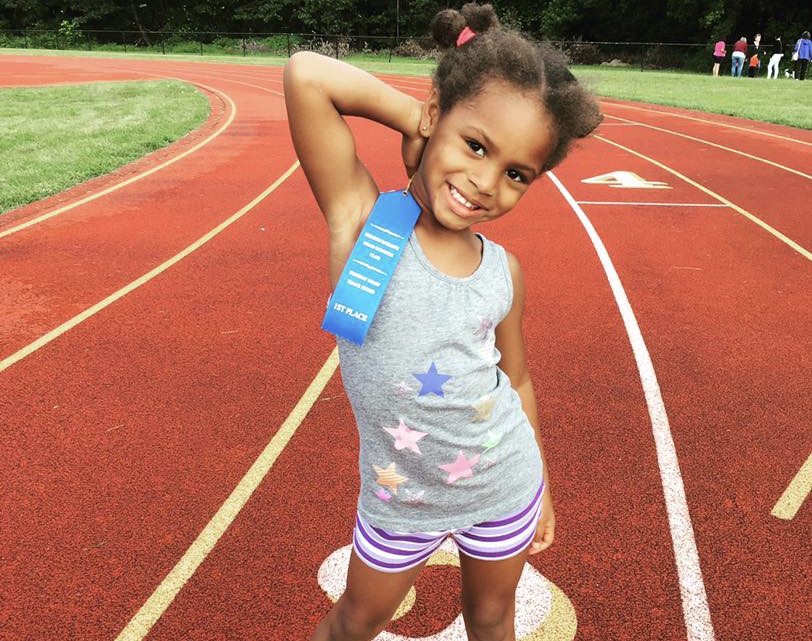The Olympics.
Every two years, I am glued to the television watching athletes show their excellence in their respective events.
I research the Olympians, trying to find out more about their path to the Games… the highs and the lows, the hard work and the sacrifices, the lifelong journey from childhood to now.
What can I say, I love sports.
Not simply watching sports, but playing sports.
From my own experience as an athlete growing up, I have always seen such value in youth sports for the body and mind. From developing sportsmanship skills to increased cardiovascular fitness, there is a lengthy list as to why involvement in sports is beneficial to kids.
Despite my love for youth sports, particularly running, my nine-year old daughter has not had the interest in joining an organized team just yet. Don’t get me wrong, she is extremely active and tires me out daily, but she is at the age where she just wants to do her own thing.
And I am more than fine with that, as it gives me added time to explore with her some of the less talked about aspects of female sports… body image, nutrition, and knowing how far is too far to push the body.
As I scroll through social media on my phone, clicking on articles about all of the Olympians, I come across personal stories about struggles with mental health and body image, particularly among the female athletes.
Olympic cross-country skiing medalist, Jessie Diggins, is an outspoken survivor of an eating disorder.
Yet despite that, a NYT article talking about her success at the Games states, “In a sport that has so many women with massive shoulders and thighs, Diggins looks like a sprite in her racing suit, and it’s not clear exactly where she gets her power.”
Really, New York Times? Do better.
Statements like that just add to the toxic culture of body size and image that can exist in female sports.
The path to even become an elite athlete can be filled with similar challenges, even sometimes fueled by the program individuals are in.
In fall 2021, the University of Oregon track team got media coverage after complaints were made by former female athletes for the use of DEXA scans, a medical imaging test that uses X-rays to precisely measure bone density and body fat percentages. The six former Ducks speaking out said they felt at risk for eating disorders because of the program’s data-driven approach to their weight and body fat.
Not all athletes are like Diggins, who seems to have found a way to navigate this toxic culture, find treatment, and get back up to her top level in the sport she loves.
You may have seen the fall 2019 video piece by the New York Times about athlete, Mary Cain. To briefly summarize, it was about how Cain was the fastest girl in America until she went under the famed (now-banned) Nike Oregon Project (NOP) coach, Alberto Salazar, who she alleges, convinced her that she needed to get thinner and thinner. The result… her body broke down physically and she broke down mentally.
Those stories shed light on issues that go beyond the alleged practices of programs like the NOP and to the areas that were all too familiar to me as an athlete… issues with body image and not knowing how much to push the body.
Despite my high school and collegiate success and being surrounded by great coaches, I too, fell into that grey area… I lost weight from training harder and I got faster, but struggled to change my dietary intake to respond to the harder level of training.
From anemia to amenorrhea, my body was out of whack and, as a teenager, I had no idea how to fix it. I would look at photos of my female runner idols, and they had the “look”… thin, fit, and fast. I was starting to look like them, so how could anything be wrong?
Thankfully, an appointment with a nutritionist helped me to understand more about the dietary needs of the body. It helped me to see that we need to reshape the perceived notion of body size in sports, particularly in those seen as ‘lean body sports’, and not have girls reshape their bodies to fit a mold. Please note, although the focus of this piece is on females, males can develop similar body issues, particularly those who participate in sports where that slim body is considered ideal for performance.
It can be hard, although never impossible, to combat a sub-culture or image that is embedded into a sport; however, there are things you can do at home with your children to best help them develop a healthy body image and be able to understand what their body needs.
- Check your own view of your body image. Not groundbreaking information here, but kids pick up on a lot. How we talk about our own bodies, especially if we say things in a negative way, can impact how a child perceives a certain body type.
- Health over weight. Talk about being healthy and staying active, not numbers on a scale. I work out every day, but my daughter just looks at it as another way to stay healthy. I also try to incorporate fun family fitness activities, like bike rides or hiking, in which we can all do together.
- Cooking together. The nutritionist helped me to understand what my body needed and how much. Cooking with your child can help them to see how to prepare meals that are healthy and that fuel the body. Cookbooks like New York Times best seller, Run Fast. Eat Slow. by NYC marathon winner Shalane Flanagan, provide recipes that are healthy, yet energy-packed and can be a great guide.
- Find an activity that works for them. I can do ten miles on a treadmill and love it. Other people I know, no matter how fit they are, would absolutely hate that. Just like we find activities that we enjoy to stay active, help your child find the best fit for them.
- Exposure to different body types. Show your kids that fitness, strength, and beauty comes in different shapes and sizes.
My daughter is not yet in sports. Who knows, maybe she will never choose to play sports like me. But just in case, I want to do what I can to hopefully prevent her from changing her body for a sport. It’s the sports that need to reshape their image of female athletes.




